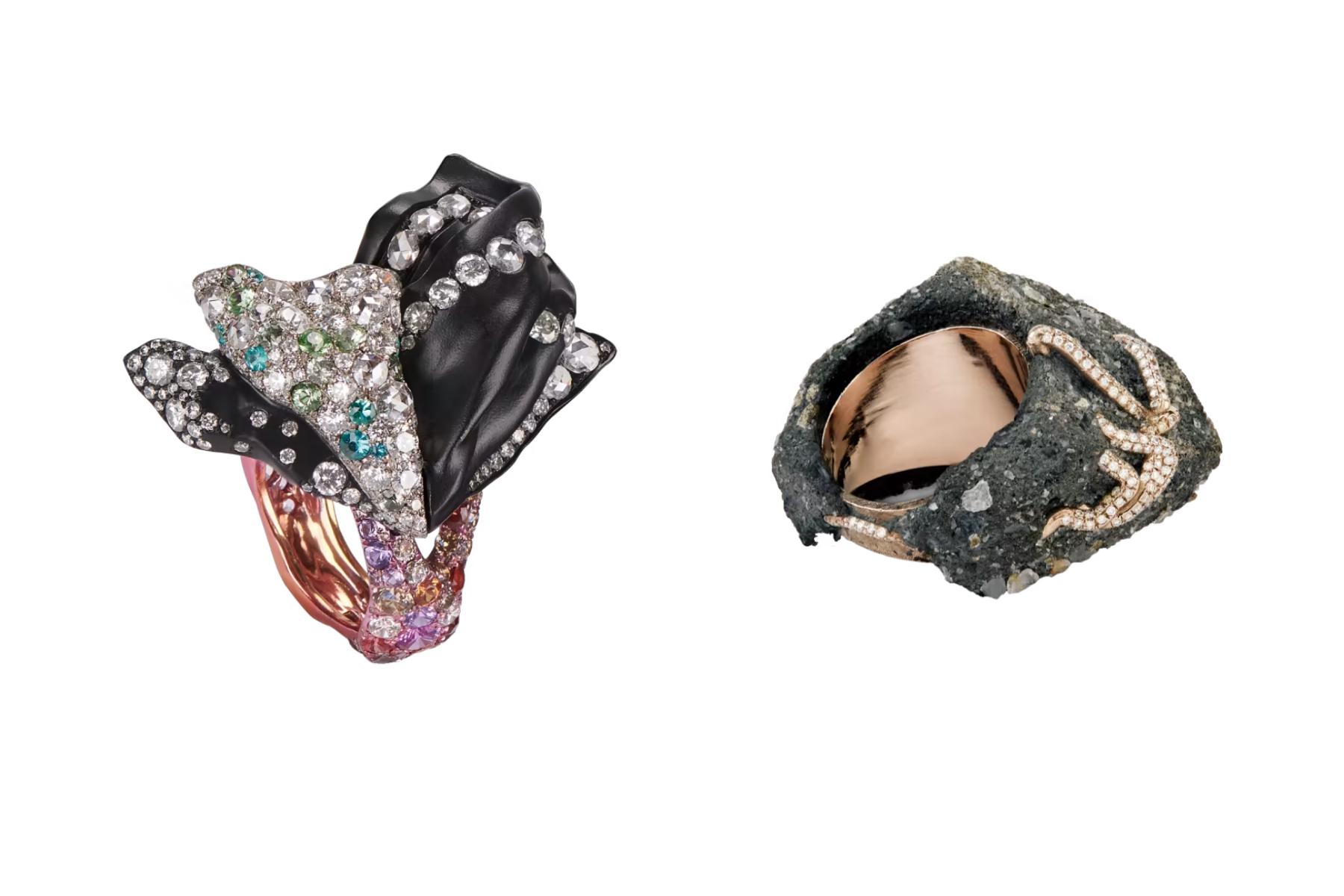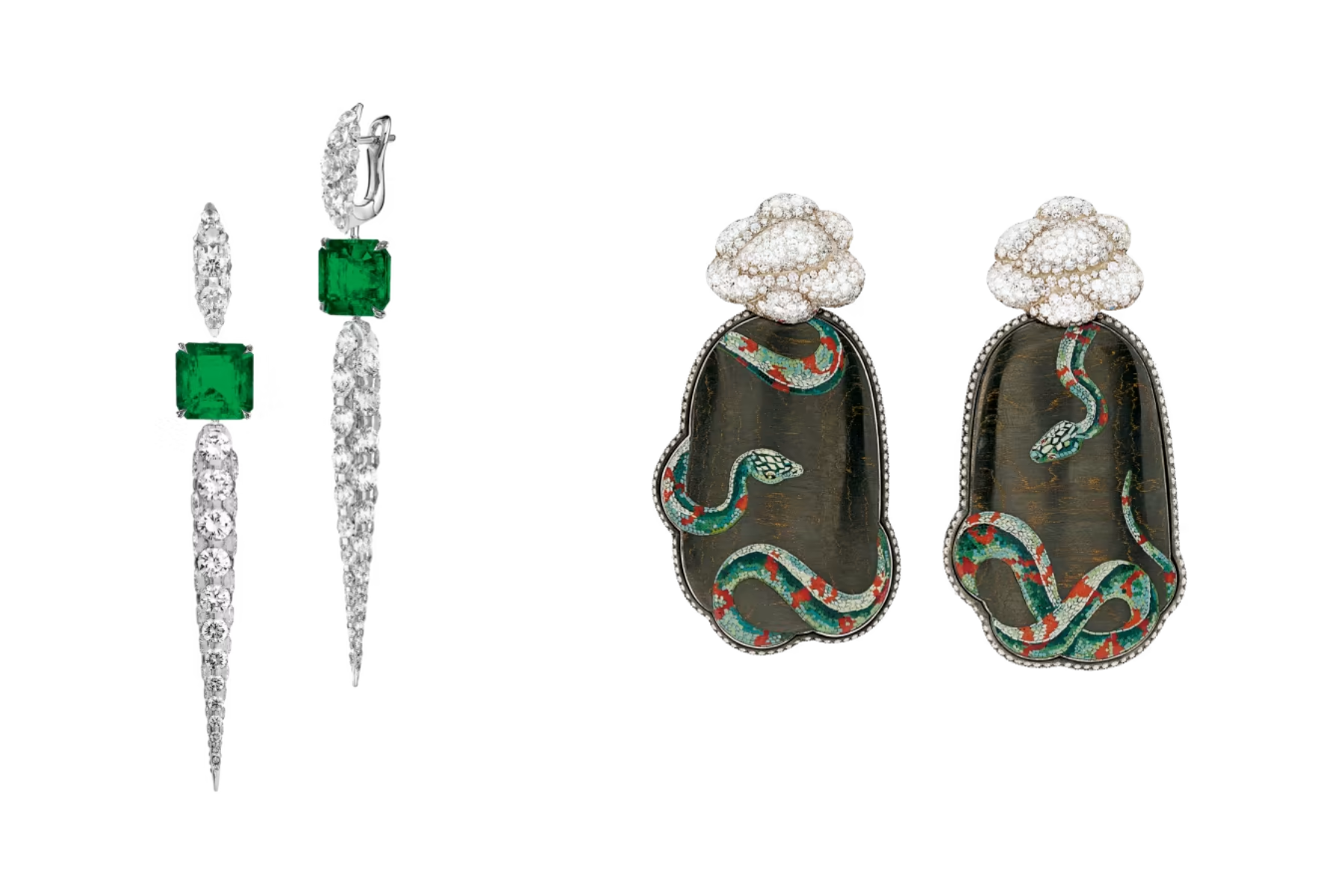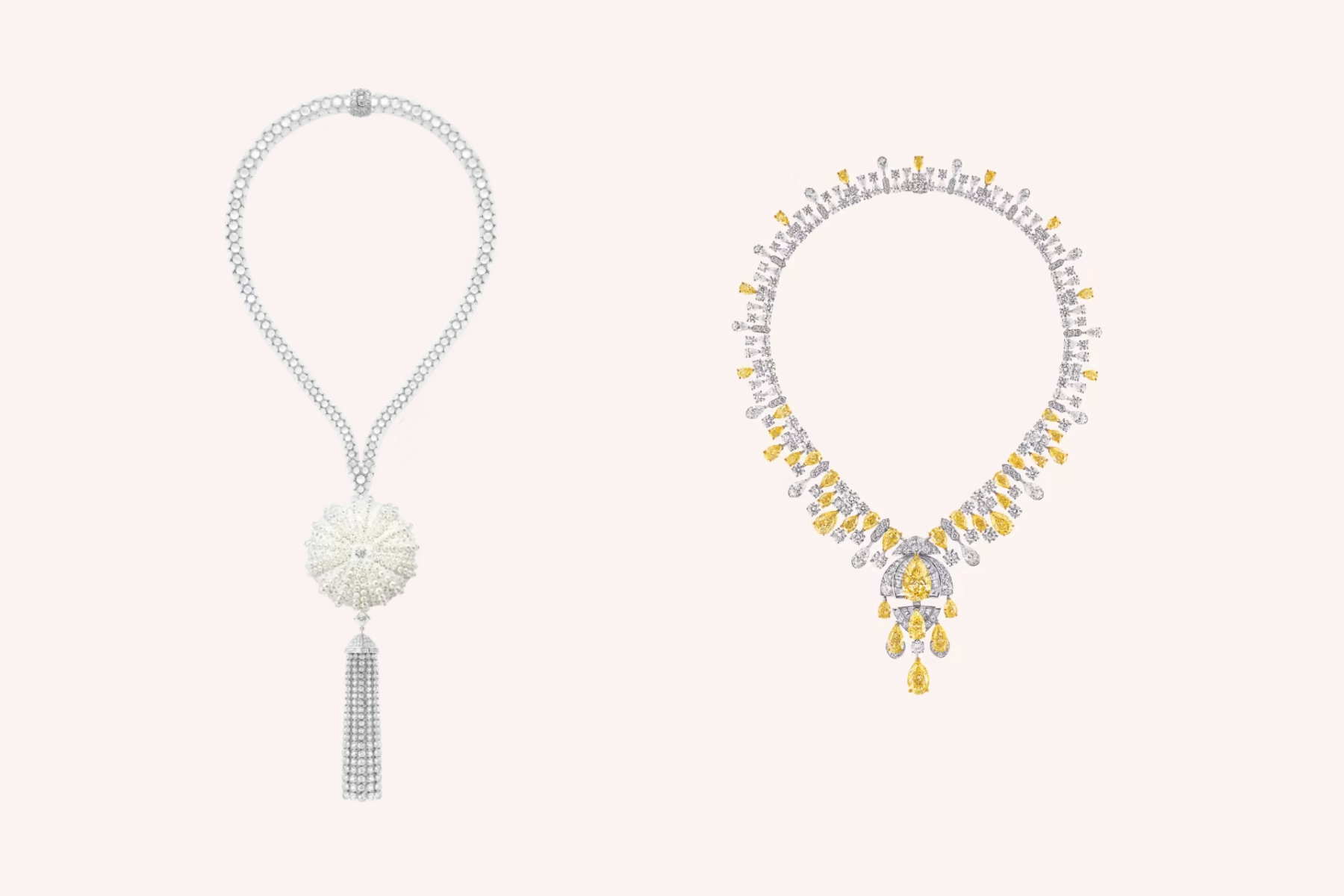Change is not allowed in the jewelrybusiness, which has been around for a long time and is very traditional. Sci-fi innovations takingjewelry into the stratosphere.
But exciting new high-tech innovations and space-age materials are completely changing how the jewel looks, feels, and is used in art. Technical wizardry is freeing design, inspiring art, building structures that were previously unimaginable, and changing the world of jewelry.
Designers Are Embracing New Materials And Technologies
Titanium is as strong as steel and only 60% denser than aluminum. It can take on a wide range of beautiful colors and has given jewels a new level of volume, especially earrings, and brooches, where weight is an issue.
Titanium was discovered in the 18th century and used in the US space program in the 1950s. It was briefly used in studio or "craft" jewelry in the 1970s, but it didn't become popular until the 1990s.
Today, titanium is showing up more and more in high-end jewelry, like in the Alchemist of Light collection by De Beers. This collection adds color, texture, and movement to diamondjewelry with the help of aluminum, which is also light and looks nothing like a jewel.
CEO Celine Assimon says:
“„This is the most creatively and technically ambitious collection we have ever conceived and crafted.- CEO Celine Assimon
Fabio Salini makes his Helix earrings out of aluminum and diamonds.
He was the first person to use a technique called "torsion" to twist and shape materials. He says, "It is both mechanical engineering and a more artistic way to master the metal."
Even more industrial is the velvety-black carbon fiber that Salini tames for other designs. In Rome, the brilliant mosaicist Maurizio Fioravanti of Vamgard uses carbon fiber to make micro-mosaics into light, modern works of art.
"Chan’s porcelain is five times harder than steel"
Thomas Hauser, an alchemist, and jeweler at Atelier Allure in Vienna spent a year trying to figure out how to master Niellium, a hard, precious metal that looks mysteriously black.
In his Choreutai series of 12 rings, he sculpts Niellium, and in his Massive Champagne series of five rings, he adds black diamonds. Hauser talks about the "beauty of shadows," and he sees Niellium as a "magnificent antithesis to the light, reflections, and refractions" that are so important in jewelry.
Rahul and Roshni Jhaveri are an Indian husband-and-wife team who work together at Studio Renn. For their Strangler ring, a wriggling organic line of diamonds seems to be growing through the concrete.
This is a study in atrophy and a reference to the urban environment of Mumbai, where they live and work. They put acid on the surface of the concrete and let it do its job, giving the environment creative control.
Ceramics is another material that has been improved and refined over time to reach a high level of technical and artistic sophistication. It is James de Givenchy's style signature as a jewelry designer in New York.
It adds color, texture, and a modern look to jewelry. In Hong Kong, master craftsman Wallace Chan, who is known for his technical skill and work with titanium, has taken ceramics to a new level with his porcelain that can't be broken.
Chan's porcelain, which came out in 2018 after seven years of research and development, is five times stronger than steel, has a shiny sheen, and comes in rich, milky-opaque colors. He says that the idea came from a childhood memory of a valuable porcelain spoon that broke when he dropped it.
Chan carves the porcelain into organic, curvy shapes that are filled with gems and set in titanium frames. He says that it is both rooted in Chinese culture and firmly in the present.
Claire Choisne, the creative director of Boucheron, says:
“„Innovation is about being open-minded. It is simply a tool, used not for its own sake but to achieve my dreams.- Claire Choisne
Her work is very thorough. For Fleurs Éternelles, she worked with scientists who usually look at mice and rats. They helped her use real petals.
For Contemplation, which was meant to show how the sky changes over time, she worked with NASA technicians to fill a pendant with aerogel to make it look like a drop of the sky. For the Cloud necklace, which is a bunch of diamonds floating on titanium thread, an IT specialist made an algorithm.
Choisne's mind took her "elsewhere" when she was writing the Ailleurs collection. It uses natural materials like rattan, wood, butterfly wings, shells, and pebbles from a Greek beach to show the beauty of the world in its raw state.
The anodized aluminum of the Feuillage bangle is made to look like woven palm leaves, and the spiral structure of a shell was airbrushed onto mother-of-pearl to make the Volcano Man necklace look like something from another world.
When it comes to techniques, CAD (computer-aided design) and the 3D printing of resin models for casting, which has become more popular in the past 10 years but still has a bad reputation as a mass-production method or an automated shortcut, are the most transformative and limit-breaking.
But Sam Sherry, head of CAD and workshop manager at Graff, tells me that in the hands of skilled designers, CAD is a tool that boosts creativity and doesn't replace it. It is especially helpful in making mechanical parts smaller.
“„In a complex necklace that has to follow the contours of the neck, for example, every component has a joint, which has to be strong and uniform. This is almost impossible to achieve to the same degree by hand.- Sam Sherry
CAD is used along with traditional methods to make Graff's high jewelry. The layout of the stones is then taken from a hand-painted gouache design and scanned at a very high resolution.
The parts for mounting and movement are then 3D-printed in a special resin with a lot of wax in it, and the lost-wax method is used to cast them. Sherry says that CAD requires both artistic and technical skill, and Graff spends often years teaching experienced diamond mounters how to use the software. "It is about problem-solving, but always with beauty in mind."
Boghossian and its creative director in Hong Kong, Edmond Chin, come up with their clever signature gem-setting techniques by trying to solve problems. Chin wants to make things that are light and smooth and use as little metal as possible.
In Merveilles, which is meant to be a modern take on pavé-setting, stones are placed back to back without any visible way to hold them up. Instead, they are held in place by a hidden internal structure and the tension of their placement. The result is a steady stream of sparkling diamond light.
Gem-setting techniques, in particular, are always getting better so that classic set jewels have a sense of movement. In its high-end Ondes et Merveilles collection, Chaumet used a technique called "scale-setting" for diamonds.
This involves overlapping stones to create the look of a mermaid's tail and give ocean-themed pieces more depth and richness. Victoire de Castellane, who is the creative director of jewelry for the house, used a lot of different settings, cuts, and shapes of gems to make the Galons Dior collection look like braided fabric, which is a signature detail of haute couture.
After doing a lot of research, the ateliers made settings with angles, lines, zigzags, or serpentines that made it look like there were patterns and textures twisting together in a happy, chaotic way.
Lastly, the fast-paced innovations in jewelry today have a touch of the future. Gearry Suen, a designer in London, and his business partner, Jing Zhao, use virtual reality to "delve deeper" into their jewelry by stepping inside it. Zhao says:
“„VR allows us to take a 2D sketch or painting to a realistic 3D model, which makes the jewel come alive at an early stage of the creation process. We can magnify the images such that a 1mm detail becomes a 3m-tall object, and use it to optimize the design. They come alive beyond anything that can be achieved on a regular screen.- Jing Zhao


